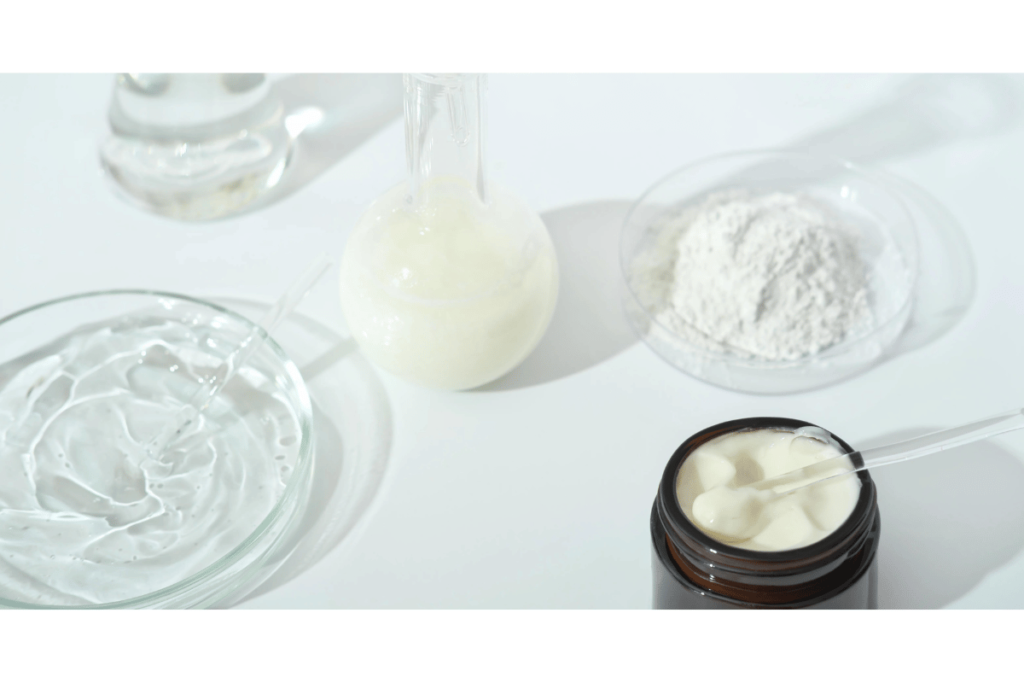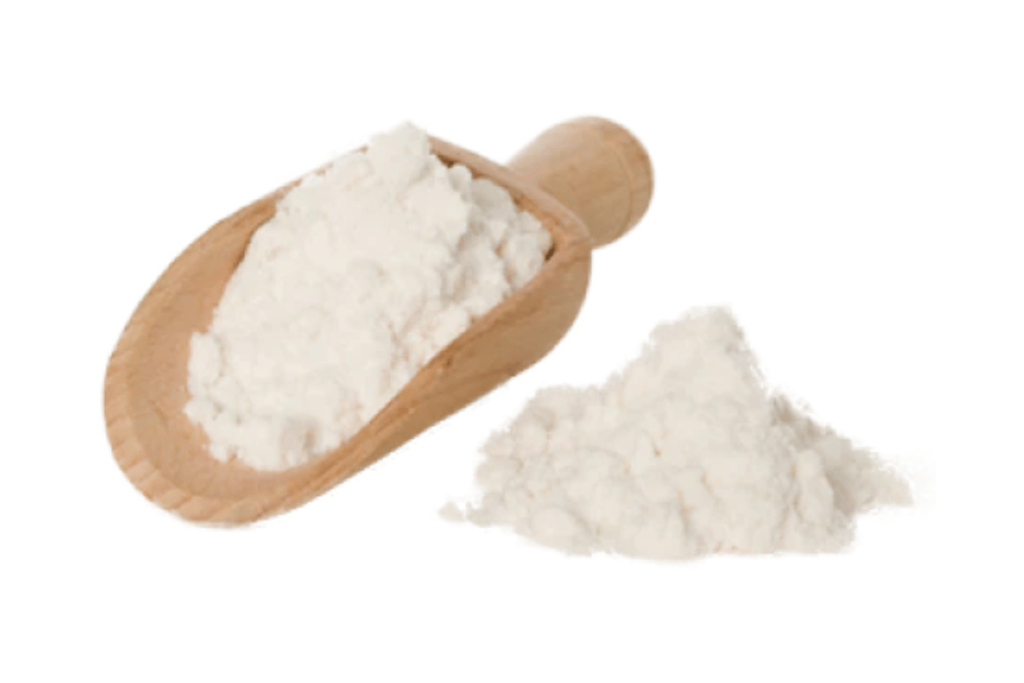Cellulose Gum Skincare, a natural ingredient derived from plant fibers, is making waves in the skincare industry. With its natural origin and gentle properties, cellulose gum is becoming a sought-after component in a variety of skincare products, catering to the growing trend of natural skincare solutions.
Cellulose gum, also known as carboxymethyl cellulose, is extracted from the cell walls of plants. This natural derivation makes it an appealing choice for those seeking skincare products with minimal synthetic additives. As the beauty industry gravitates towards more eco-friendly and skin-friendly ingredients, cellulose gum stands out for its compatibility with these trends.
The use of cellulose gum in skincare products is particularly noteworthy for its suitability for sensitive skin types. Unlike some synthetic ingredients that can cause irritation or adverse reactions, cellulose gum is known for its mild and non-irritating nature. This makes it an ideal ingredient in formulations designed for individuals with sensitive or reactive skin.
In this article, we will explore the composition and key properties of cellulose gum, its benefits for sensitive skin, its role in various skincare formulations, and how it compares to other common skincare ingredients. We’ll delve into the scientific studies supporting its use and discuss consumer insights and market trends that are driving the popularity of cellulose gum in the skincare realm.
As we progress, we will also address the challenges and considerations in formulating with cellulose gum, especially for sensitive skin, and conclude with insights into the future of this natural ingredient in the skincare industry.

Cellulose Gum: Composition and Properties
Delving into the composition and properties of Cellulose Gum provides insight into why it is increasingly favored in skincare formulations. This natural polymer, derived from plant cellulose, offers unique benefits for skin health and product formulation.
Detailed Description of the Composition of Cellulose Gum
Cellulose Gum, scientifically known as carboxymethyl cellulose (CMC), is a modified form of cellulose. It is produced by introducing carboxymethyl groups into the cellulose structure through a chemical process. This modification increases its solubility in water and enhances its ability to form gels, making it a versatile ingredient for skincare products.
The source of cellulose used in the production of Cellulose Gum typically comes from sustainably grown and harvested wood pulp or cotton fibers. This natural origin contributes to its appeal as an eco-friendly and biodegradable ingredient in the skincare industry.
Key Properties that Make It Suitable for Skincare Formulations
One of the standout properties of Cellulose Gum is its high viscosity, which is beneficial for the texture and application of skincare products. It helps in creating smooth, spreadable formulations that glide easily on the skin, enhancing the user experience.
Cellulose Gum also acts as a stabilizer and thickener in skincare formulations. It helps maintain the consistency and stability of products, ensuring that active ingredients remain evenly dispersed. This property is particularly important in products like lotions, creams, and serums, where uniformity is key to effectiveness.
Moreover, its ability to retain water makes it an excellent humectant. Cellulose Gum can help to lock in moisture, keeping the skin hydrated and supple. This is especially beneficial in products aimed at dry or dehydrated skin types.
In conclusion, the composition and properties of Cellulose Gum make it a highly beneficial ingredient in skincare formulations. Its natural origin, combined with its ability to improve texture, stability, and hydration, positions it as a valuable component in the development of effective and natural skincare products.
Benefits of Cellulose Gum for Sensitive Skin
Cellulose Gum is increasingly recognized for its gentle nature, making it an excellent choice for sensitive skin care. Its unique characteristics contribute to soothing and protecting sensitive skin, offering multiple benefits.
Discussing the Gentle Nature of Cellulose Gum
One of the primary advantages of Cellulose Gum in skincare is its mildness. Unlike some synthetic ingredients that can cause irritation, Cellulose Gum is known for its non-irritating and hypoallergenic properties. This makes it particularly suitable for products targeting sensitive skin types. Its gentle nature ensures that it does not disrupt the skin’s natural barrier, reducing the likelihood of inflammation or allergic reactions.
How Cellulose Gum Benefits Sensitive Skin Types
Cellulose Gum’s capacity to retain moisture is a significant benefit for sensitive skin, which often struggles with dryness and dehydration. By helping to lock in moisture, it aids in maintaining the skin’s hydration levels, leaving it feeling soft and supple. This hydration support is crucial for sensitive skin, as it helps to alleviate dryness and discomfort.
Additionally, the protective film formed by Cellulose Gum on the skin’s surface can be beneficial for sensitive skin types. This thin layer provides a barrier against environmental stressors such as pollutants and irritants. By shielding sensitive skin from these external factors, Cellulose Gum helps to reduce the risk of irritation and skin reactions.
Furthermore, Cellulose Gum’s stability in formulations ensures that the active ingredients designed to soothe and care for sensitive skin are effectively delivered. Its ability to evenly distribute and stabilize these ingredients within skincare products enhances their efficacy and ensures consistent benefits with each application.
In conclusion, the benefits of Cellulose Gum for sensitive skin are multifaceted. Its gentle, moisturizing, and protective properties make it an ideal ingredient in formulations aimed at caring for sensitive skin, providing comfort and enhancing the overall health and appearance of the skin.
Cellulose Gum in Skincare Formulations
Cellulose Gum has become a prominent ingredient in various skincare products, including creams, lotions, and serums. Its inclusion in skincare formulations is particularly beneficial for sensitive skin, due to its gentle and nurturing properties.
Role of Cellulose Gum in Various Skincare Products
In creams and lotions, Cellulose Gum acts as a stabilizer and thickener, enhancing the texture and consistency of these products. It helps to create a smooth, creamy formulation that spreads evenly on the skin, providing a soothing and hydrating effect. This is especially important in products designed to calm and moisturize sensitive skin.
In serums, which are typically lighter and more fluid than creams, Cellulose Gum contributes to the formulation’s viscosity, making it easier to apply. It ensures that the active ingredients in serums are evenly distributed and effectively absorbed by the skin, maximizing their benefits.
Examples of Products Targeted Towards Sensitive Skin Containing Cellulose Gum
Many skincare brands have recognized the advantages of Cellulose Gum and incorporated it into their sensitive skin product lines. For instance, a hydrating facial cream formulated for sensitive skin might include Cellulose Gum to enhance its moisturizing properties and ensure a non-irritating application.
Similarly, a calming serum for sensitive skin types might use Cellulose Gum to create a gentle, easily absorbed texture that delivers soothing agents like aloe vera or chamomile extract more effectively to the skin.
These examples showcase how Cellulose Gum is being utilized in modern skincare formulations to cater to the needs of sensitive skin types, providing gentle, effective care.
In conclusion, the role of Cellulose Gum in skincare formulations is crucial, particularly for products aimed at sensitive skin. Its ability to improve product texture, consistency, and efficacy makes it a valuable ingredient in the skincare industry, helping to develop products that are both gentle and beneficial for sensitive skin.

Comparing Cellulose Gum with Other Skincare Ingredients
In the realm of skincare, Cellulose Gum holds a distinctive place, especially when compared to other common ingredients. Its advantages for sensitive skin are particularly notable when contrasted with synthetic alternatives.
How Cellulose Gum Compares to Other Common Skincare Ingredients
Cellulose Gum’s plant-based origin sets it apart from many synthetic ingredients commonly used in skincare products. Unlike some synthetic compounds that can be harsh or irritating, especially for sensitive skin types, Cellulose Gum is gentle and well-tolerated. Its natural derivation ensures that it works harmoniously with the skin, minimizing the risk of adverse reactions.
When compared to other natural ingredients like xanthan gum for skin or citric acid skincare, Cellulose Gum offers unique benefits. While xanthan gum is also used as a thickener and stabilizer, Cellulose Gum tends to be less sticky, providing a smoother texture. Citric acid, often used for its pH-adjusting properties, can be more irritating to sensitive skin than Cellulose Gum, which is typically non-irritating.
Its Advantages for Sensitive Skin Compared to Synthetic Alternatives
One of the key advantages of Cellulose Gum in sensitive skin formulations is its hypoallergenic nature. Unlike some synthetic ingredients that might trigger allergic reactions or sensitivities, Cellulose Gum is generally safe and non-reactive. This makes it a preferred choice in products formulated for delicate skin.
Additionally, Cellulose Gum’s ability to effectively bind and retain moisture surpasses many synthetic moisturizing agents. This quality is particularly beneficial for sensitive skin, which often requires gentle yet effective hydration.
Moreover, in formulations where skin barrier protection is essential, Cellulose Gum’s film-forming capability provides a non-occlusive, breathable barrier that protects sensitive skin from environmental stressors without causing congestion or irritation.
In conclusion, Cellulose Gum’s comparison with other skincare ingredients, both natural and synthetic, highlights its suitability for sensitive skin care. Its gentle, effective, and non-irritating properties make it an advantageous ingredient in formulations aimed at caring for and protecting sensitive skin types.
The Science Behind Cellulose Gum and Skin Health
Exploring the scientific research and studies on Cellulose Gum reveals its beneficial effects on skin health, particularly in skincare formulations. Understanding its mechanism of action is key to appreciating its role in enhancing skin wellness.
Exploring Scientific Studies and Research on Cellulose Gum and Its Effects on Skin
Several scientific studies have delved into the efficacy of Cellulose Gum in skincare. These studies highlight its moisturizing properties, its ability to form a protective barrier on the skin, and its role in enhancing the delivery and effectiveness of active ingredients in skincare products.
Research indicates that Cellulose Gum, due to its hydrophilic nature, can significantly improve skin hydration. By binding water molecules, it helps maintain moisture levels in the skin, which is crucial for skin health, particularly in dry and sensitive skin types.
Mechanism of Action in Skincare Formulations
The mechanism of action of Cellulose Gum in skincare formulations involves several key aspects:
- Moisture Retention: Cellulose Gum acts as a humectant, attracting and retaining moisture, which helps keep the skin hydrated and plump.
- Emulsion Stabilization: In formulations that combine water and oil components, Cellulose Gum helps stabilize the emulsion, ensuring an even distribution of ingredients and preventing separation.
- Protective Barrier Formation: When applied to the skin, Cellulose Gum forms a thin, breathable film. This film provides a protective barrier that shields the skin from environmental pollutants and irritants, without clogging pores or causing discomfort.
- Enhanced Delivery of Actives: Cellulose Gum can also improve the efficacy of other active ingredients in skincare products. By stabilizing formulations, it ensures that these actives remain evenly dispersed and are effectively absorbed by the skin.
The scientific understanding of Cellulose Gum’s role in skincare formulations underscores its significance in promoting skin health. Its ability to hydrate, protect, and enhance the performance of skincare products aligns with the needs of various skin types, particularly sensitive skin.
In conclusion, the science behind Cellulose Gum in skincare demonstrates its multifaceted benefits for skin health. Its moisturizing, protective, and stabilizing properties, backed by scientific research, make it a valuable ingredient in skincare formulations aimed at nurturing and enhancing skin wellness.

Consumer Insights and Market Trends
The growing preference for natural ingredients like Cellulose Gum in skincare products reflects a significant shift in consumer behavior and market trends. Understanding these dynamics is crucial for skincare brands and manufacturers.
Trends in Consumer Preference for Natural Ingredients like Cellulose Gum
In recent years, there has been a notable surge in consumer demand for skincare products that are not only effective but also derived from natural sources. This trend is driven by a growing awareness of the potential side effects of synthetic ingredients and a desire for more eco-friendly and sustainable skincare solutions.
Cellulose Gum, with its natural origin and gentle properties, fits perfectly into this trend. Consumers increasingly seek out products containing cellulose gum due to its reputation for being mild, hypoallergenic, and suitable for all skin types, especially sensitive skin.
Market Data Showing the Growing Popularity of Cellulose Gum in Skincare
Market research data indicates a steady increase in the inclusion of cellulose gum in skincare formulations. This rise can be attributed to its multifunctional benefits, such as improving product texture, enhancing stability, and contributing to overall skin health.
Skincare brands are responding to this consumer preference by highlighting cellulose gum as a key ingredient in their products. From high-end to affordable ranges, cellulose gum is becoming a staple in a wide array of skincare items, reflecting its growing acceptance and popularity in the market.
Furthermore, the trend towards clean beauty, which emphasizes formulations free from harmful chemicals and synthetic additives, has bolstered the use of cellulose gum. It aligns with the clean beauty ethos by offering a safe, natural, and effective alternative to conventional synthetic ingredients.
In conclusion, consumer insights and market trends clearly indicate a growing preference for natural ingredients like cellulose gum in skincare products. This shift is reshaping the skincare industry, as brands strive to meet consumer expectations for natural, safe, and effective skincare solutions.
Challenges and Considerations in Formulating with Cellulose Gum
While Cellulose Gum is celebrated for its benefits in skincare formulations, integrating it effectively presents unique challenges and technical considerations. Addressing these is key to harnessing its full potential, particularly in products designed for sensitive skin.
Technical Considerations for Incorporating Cellulose Gum into Skincare Products
Formulating with Cellulose Gum requires a nuanced understanding of its interaction with other ingredients. It’s essential to consider the following:
- Solubility and Viscosity: Cellulose Gum’s solubility and viscosity can vary depending on pH and temperature. Formulators must carefully balance these factors to achieve the desired consistency without compromising the product’s stability.
- Synergistic Effects: Cellulose Gum can interact with other ingredients, both positively and negatively. Understanding these interactions is crucial for creating effective formulations. For instance, its combination with certain active ingredients can enhance their efficacy, while in other cases, it might inhibit their performance.
- Concentration Levels: Determining the right concentration of Cellulose Gum is critical. Too little may not provide the desired stabilization and texture, while too much can lead to a tacky or heavy feel on the skin.
Addressing Formulation Challenges Specific to Sensitive Skin
Sensitive skin requires extra care in formulation to avoid irritation or adverse reactions. When formulating with Cellulose Gum for sensitive skin, consider the following:
- Gentle Formulation: Ensure that the formulation is gentle and non-irritating. This involves not only considering the properties of Cellulose Gum but also the overall composition of the product.
- Allergen-Free: Although Cellulose Gum is generally hypoallergenic, ensuring that the final product is free from common allergens is crucial for sensitive skin formulations.
- Testing and Evaluation: Rigorous testing, including patch tests and dermatological evaluations, can help ascertain the suitability of the formulation for sensitive skin.
In conclusion, formulating with Cellulose Gum, especially for sensitive skin, involves navigating various challenges and considerations. However, with the right approach and thorough understanding of its properties, Cellulose Gum can significantly enhance the quality and appeal of skincare products, making them suitable for a wide range of skin types, including the most delicate and reactive ones.

In the evolving landscape of skincare, Cellulose Gum has emerged as a key ingredient, particularly esteemed for its compatibility with sensitive skin types. Its natural origin, gentle nature, and multifunctional properties align with current consumer preferences for safe, effective, and eco-friendly skincare solutions.
Summarizing the Role and Benefits of Cellulose Gum in Skincare
Cellulose Gum’s role in skincare extends beyond mere formulation stability. It enhances product texture, contributes to skin hydration, and offers a soothing effect, making it particularly beneficial for sensitive skin. Its versatility as a stabilizer, thickener, and emollient, coupled with its hypoallergenic nature, positions Cellulose Gum as a valuable ingredient in a broad spectrum of skincare products.
Final Thoughts on the Growing Trend of Natural Skincare Ingredients
The increasing consumer inclination towards natural and gentle skincare ingredients has spotlighted Cellulose Gum. This trend reflects a broader shift in the beauty industry towards transparency, sustainability, and safety. As consumers become more informed and conscious about the ingredients in their skincare products, the demand for natural, plant-based ingredients like Cellulose Gum is expected to grow.
In the quest for innovative, natural skincare formulations, Cellulose Gum offers formulators a unique blend of functionality and skin-friendliness. Its ability to meet the challenges of modern skincare formulations, while aligning with sustainable and natural beauty trends, underscores its enduring value in the skincare industry.
In conclusion, the role and benefits of Cellulose Gum, especially for sensitive skin types, are significant and multifaceted. As the skincare industry continues to evolve, the importance of natural, effective ingredients like Cellulose Gum will likely continue to grow, further solidifying its place in the world of skincare.





